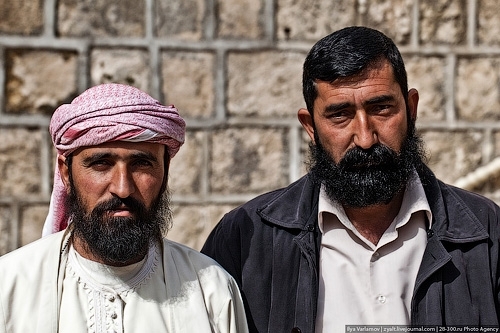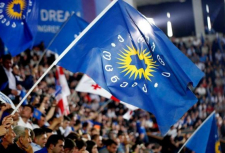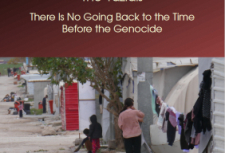Persecution and the development of Yezidi ritual life

Eszter Spat
Yezidi ritual life and the upheavals of the past decades
As can be seen above, it is not abstract religious knowledge but participation in rituals which constitutes the backbone of religion as experienced by the majority of Yezidi community. This fact makes the Yezidi religion extremely vulnerable to the political upheavals that have characterised the region for decades and have disrupted the life of the Yezidi community repeatedly. The first serious disruption was brought about by the Kurdish policy of the Ba’athist regime. The notion that Saddam suppressed and persecuted the Yezidi religion is a staple part of the official discourse on Yezidis’ recent past and it is dutifully repeated by various journalists writing about the Yezidis. However, the reality is far more complicated. Interviews with various Yezidis make it clear that Saddam did not persecute the Yezidi religion as such. What is more, many Yezidis recalling the Saddam era even claimed that Saddam liked Yezidis (and Christians) and trusted them more than Muslims. What, however, brought strict retribution was identifying as a Kurd and supporting the Kurdish cause. Consequently, the participation of at least a part of the Yezidi community in the Kurdish movement had serious consequences. As part of the Ba’athist fight against Kurdish guerrillas and their supporters, Yezidi villages at the foot of mountains were destroyed and their inhabitants moved into huge collective settlements where they could be monitored with more ease.14 Apart from the social, economic and psychological impact of the destruction of their ancient villages, in the case of some villages this also meant the loss of the village shrine. Many shrines were even destroyed by Saddam’s army, when the villagers were moved. In some cases, these shrines were rebuilt in the new villages, despite the Following the 2003 war and the collapse of the Saddam regime, the two communities were unified, or at least the internal border ceased to exist and Yezidis were free to travel wherever they pleased. On the other hand, Islamist fundamentalism and banditry masquerading itself as Islamic jihad was soon to rise after the war, and Yezidis were often the targets of terrorist activities. Shootings, explosions and kidnappings created a security situation where many were too careful to avail themselves of the theoretical freedom of movement provided by the fall of the previous regime. This could not but affect ritual life. The Autumn Assembly was repeatedly cancelled in the years following the war (and then, after a few years of consolidation, again in 2013). Similarly, communal dances during tiwafs were repeatedly forbidden for fear of the crowd attracting a terror attack. In some villages tiwafs were also “scaled down”, with only the heads of households congregating at the private house of the shrine guardian, instead of the whole community (and their guests) jostling around at the shrine.
The opinion of the editorial Board does not coincide with the opinion of the author.
Tags: #yazidisinfo #ezidi #aboutezidi
Persecution and the development of Yezidi ritual life

Eszter Spat
Yezidi ritual life and the upheavals of the past decades
As can be seen above, it is not abstract religious knowledge but participation in rituals which constitutes the backbone of religion as experienced by the majority of Yezidi community. This fact makes the Yezidi religion extremely vulnerable to the political upheavals that have characterised the region for decades and have disrupted the life of the Yezidi community repeatedly. The first serious disruption was brought about by the Kurdish policy of the Ba’athist regime. The notion that Saddam suppressed and persecuted the Yezidi religion is a staple part of the official discourse on Yezidis’ recent past and it is dutifully repeated by various journalists writing about the Yezidis. However, the reality is far more complicated. Interviews with various Yezidis make it clear that Saddam did not persecute the Yezidi religion as such. What is more, many Yezidis recalling the Saddam era even claimed that Saddam liked Yezidis (and Christians) and trusted them more than Muslims. What, however, brought strict retribution was identifying as a Kurd and supporting the Kurdish cause. Consequently, the participation of at least a part of the Yezidi community in the Kurdish movement had serious consequences. As part of the Ba’athist fight against Kurdish guerrillas and their supporters, Yezidi villages at the foot of mountains were destroyed and their inhabitants moved into huge collective settlements where they could be monitored with more ease.14 Apart from the social, economic and psychological impact of the destruction of their ancient villages, in the case of some villages this also meant the loss of the village shrine. Many shrines were even destroyed by Saddam’s army, when the villagers were moved. In some cases, these shrines were rebuilt in the new villages, despite the Following the 2003 war and the collapse of the Saddam regime, the two communities were unified, or at least the internal border ceased to exist and Yezidis were free to travel wherever they pleased. On the other hand, Islamist fundamentalism and banditry masquerading itself as Islamic jihad was soon to rise after the war, and Yezidis were often the targets of terrorist activities. Shootings, explosions and kidnappings created a security situation where many were too careful to avail themselves of the theoretical freedom of movement provided by the fall of the previous regime. This could not but affect ritual life. The Autumn Assembly was repeatedly cancelled in the years following the war (and then, after a few years of consolidation, again in 2013). Similarly, communal dances during tiwafs were repeatedly forbidden for fear of the crowd attracting a terror attack. In some villages tiwafs were also “scaled down”, with only the heads of households congregating at the private house of the shrine guardian, instead of the whole community (and their guests) jostling around at the shrine.
The opinion of the editorial Board does not coincide with the opinion of the author.
Tags: #yazidisinfo #ezidi #aboutezidi


























